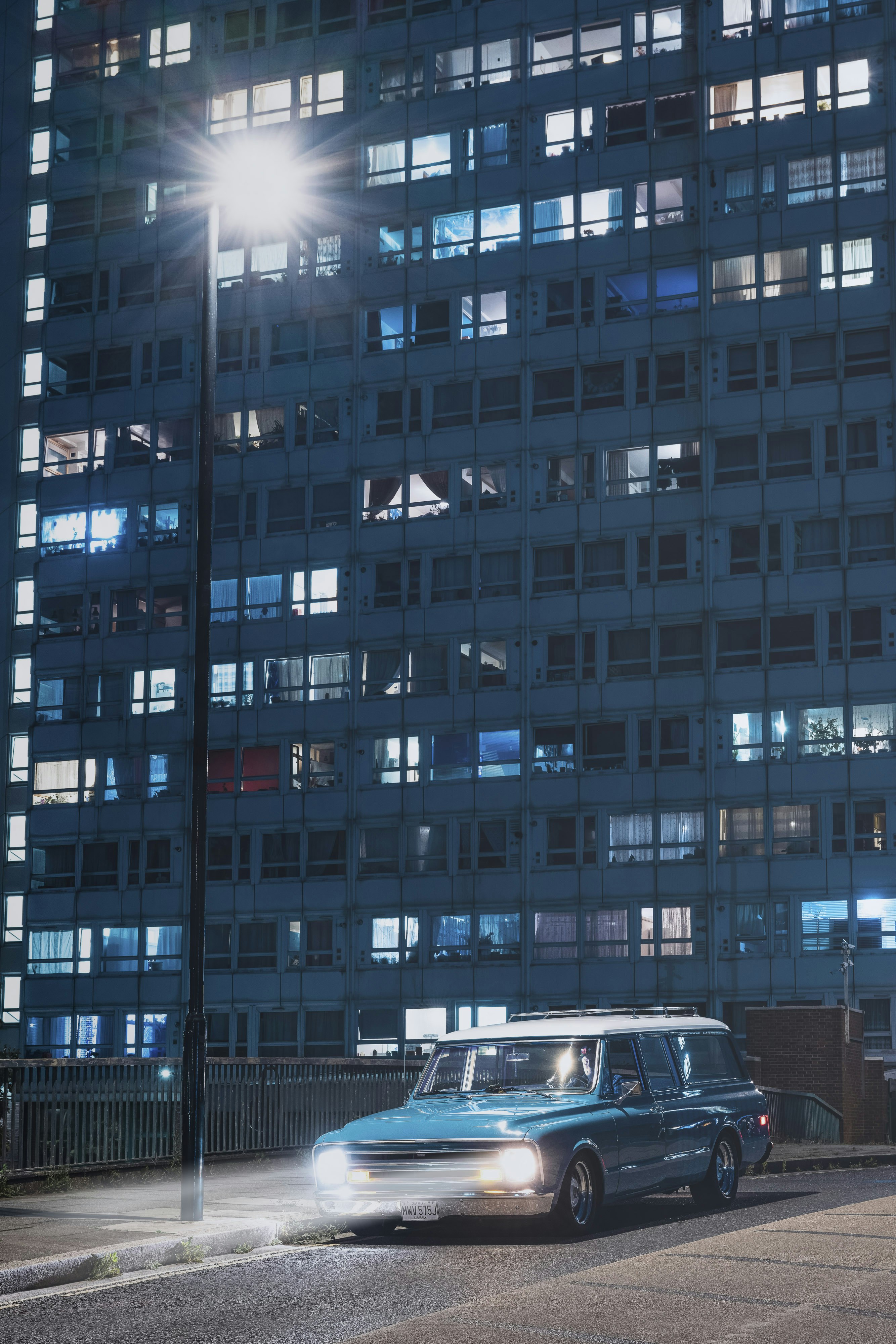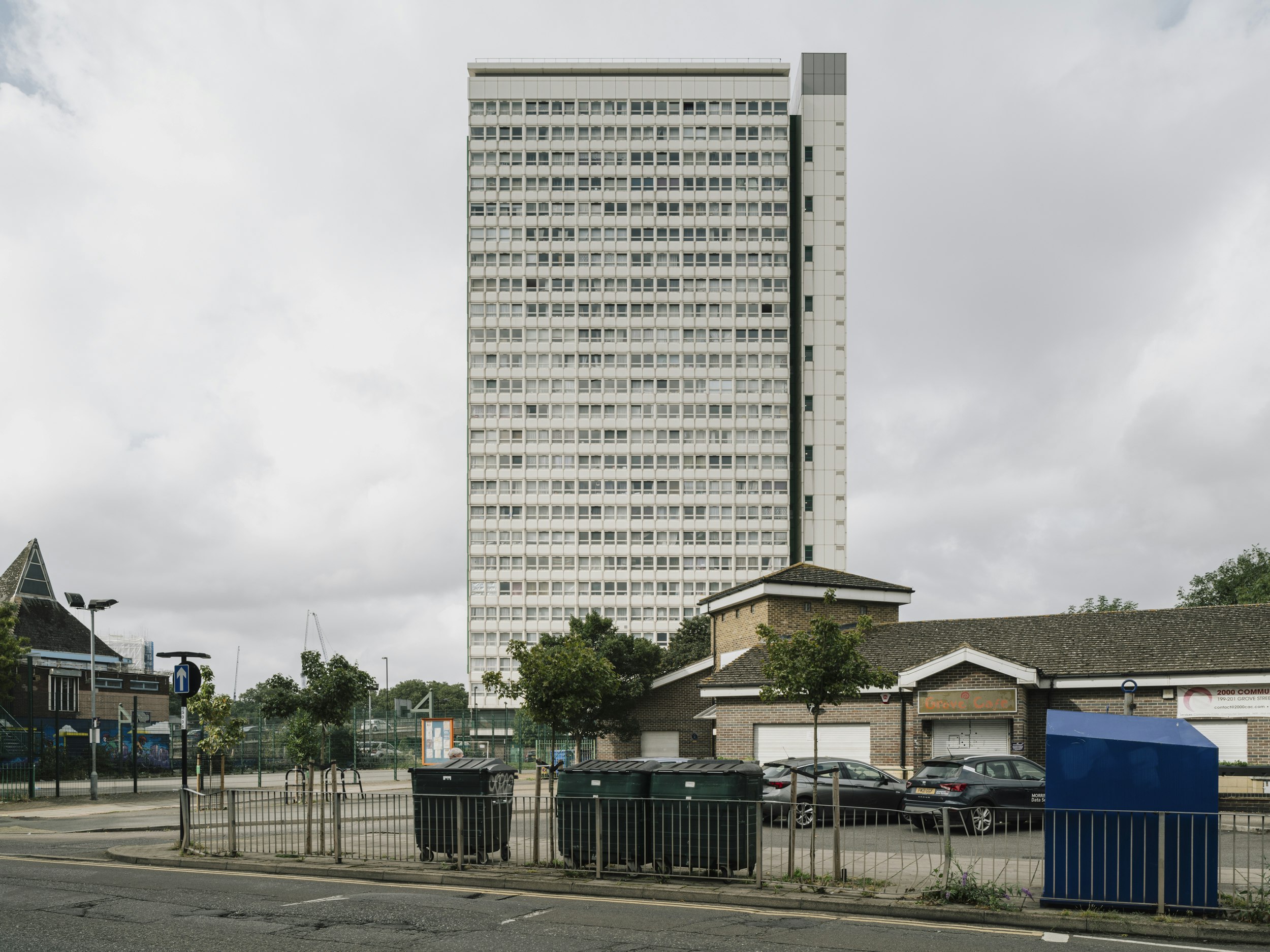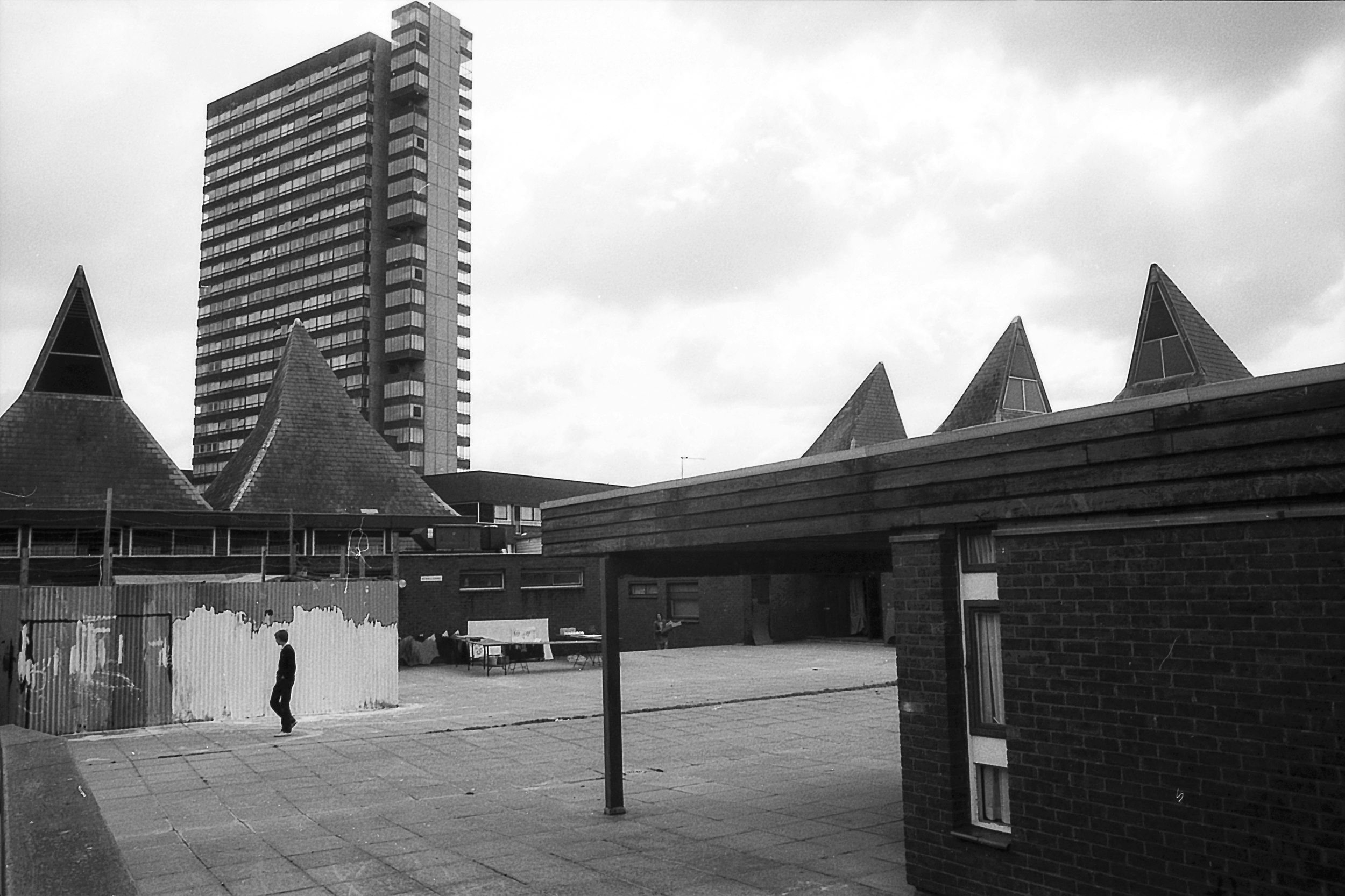More than 50 years after documentary photographer Tony Ray-Jones captured iconic images of Deptford’s brutalist Pepys Estate for The Architectural Review, a group of image-makers has returned to explore aspects of contemporary life at the groundbreaking housing scheme.
Wallpaper* featured in 'This Month's Best London Architecture Exhibitions'
'The show is inspired by the The Architectural Review's seminal Manplan editorial programme of 1969–1970 – and gives it a 21st century twist.'
'Through words and images, Boundary Conditions beautifully reveals how social, political, and cultural contexts have played out against the architecture over the decades.' Veronica Simpson writing for Recessed Space
'With so much development in east and south-east London, it's easy to always focus on the new. Change is a compelling subject, and there's a lot of it about. That's why projects such as Boundary Conditions: Reframing the Pepys Estate are so important.' Jon Massey, Wharf Life
Venue and dates:
Gareth Gardner Gallery
50 Resolution Way, London SE8 4AL
22 September 2023 – 15 October 2023
Private view, 21 September 6pm–9pm
Free admission
Opening times:
22 September, 6pm–9pm
23/24/29/30 September, 2pm–6pm
01/07/14/15 October, 2pm–6pm
New works by: Jérôme Favre, Gareth Gardner, Tim George, Freddie Miller, Danilo Murru
Archive works by: Steve Burden, Rob Kenyon, Dr Tim Livsey and James Price
Gareth Gardner Gallery – the UK’s only gallery dedicated to photography of architecture and place – will host Boundary Conditions, an exhibition combining newly-commissioned photography with !lm, graphics and archive material. The exhibit is showing as part of the 2023 Deptford X art festival.
Inspired by The Architectural Review’s seminal Manplan editorial programme of 1969–1970, the project also commemorates the completion of construction of the estate 50 years ago, in 1973.
The exhibition provides a series of contemporary perspectives of the estate, while also investigating how its fortunes have "uctuated through history. Opened in 1966 by Louis Mountbatten, 1st Earl Mountbatten of Burma, for ‘the peaceful enjoyment and well-being of Londoners’, the Pepys Estate was prominently featured in the Manplan issue on housing in September 1970, illustrated by monochrome reportage photographs by Tony Ray-Jones.
The magazine described the Pepys Estate as ‘a backwater’ that was ‘monumental in intention and socially monolithic’. Its towers and lower-rise blocks were inter-connected via raised walkways, allowing residents to walk from one end to the other without touching the ground. Internally, the split-level flats were designed with an innovative ‘scissor plan’.
Today many of the more radical elements have been demolished or remodelled, one of the towers sold to the private sector and converted into luxury apartments, and the resident population is far more diverse than in 1970. The newly-completed photographic and video projects re"ect the more complex and nuanced identity of today’s estate, set against its still-imposing brutalist architecture.
Four projects explore the different meanings of boundaries
Jérôme Favre: Twilight

An exploration of life on Pepys Estate between day and night, Twilight is a series of atmospheric images examining the relationship between the residents and the brutalist architecture.
Far from the liveliness of the day, the estate becomes a much more contemplative place between day and night, colourful windows light up and the pace slows down, allowing for photographs to become more introspective.
Gareth Gardner: Scissors

When completed, the three towers of the Pepys Estate were the tallest residential buildings in London. Internally, the interlocking split-level flats were designed with an innovative ‘scissor plan’ allowing each apartment to be dual aspect while using space to maximum ef!ciency.
This innovative architectural solution by London County Council was implemented at several other locations within the capital yet subsequently hit a dead end. Scissors revisits each of the buildings and records their subsequent fate.
Freddie Miller: The District

Pepys Estate is known as ‘The District’ by a group of drill artists who live there. Following Skitszo and his friends as they spend the long and still summer days hanging out 'on the block', The District explores the estate environment, aspiration and relationship with place among young estate residents trying to make it as artists.
The project combines analogue photography with digital video and is predicated on a collaborative relationship between the image-maker wishing to create a snapshot of life on the estate, and subjects wanting images for music promotion.
Danilo Murru: No Ball Games

Danilo Murru has been inspired to create two parallel sequences of work about the Pepys Estate. Colour images represent the estate’s physical and social borders, where it adjoins surrounding regeneration projects and planned areas of gentri!cation. Monochrome images depict moments within the estate, semi-abstract photographs of hidden corners and edge spaces that reveal the unintentional complexity and beauty of the estate as it has evolved over the last six decades.
Tim George: Graphics and interpretation elements
Graphic designer and photographer Tim George is collaborating with curator Gareth Gardner to create a visual identity for the exhibition, inspired by the uncompromising original designs for Manplan. A number of contextual information panels channel Manplan’s spirit and pioneering printing methods created by The Architectural Review’s designers Michael Reid and Peter Baistow.
Archive material on display

The newly-commissioned projects will be accompanied by a display of archive material about Manplan, including original copies of the magazine, plus highlights from photography and videography artworks about the estate in the intervening 53 years. These include collages by Steve Burden, the film ‘Reading Pepys’ by Dr Tim Livsey and James Price, and photographs taken on the estate by Rob Kenyon in 1981, commissioned by the Albany Summer Playscheme.
Accompanying essay
An essay about the estate, by Municipal Dreams author John Boughton, has been commissioned especially for the exhibition.

